Steps to creating an emergency rental assistance program
- Start with guidelines and requirements from your funding source
- Design your application and plan how to gather information
- Establish clear guidelines
- Build a referral network
Housing instability and the looming threat of eviction continue to plague renters across the United States. Financial lifelines like unemployment benefits are not always enough to keep people housed.
Emergency rental assistance programs are one way to address the ongoing crisis in the rental market. If you’re considering starting a program like this, here are some tips to help.
What is an emergency rental assistance program?
An emergency rental assistance program (or ERAP) offers financial support to tenants who are at risk of losing their housing.
These programs prevent tenants from falling behind on rent. They can assist with everything from paying rent to covering associated costs like security deposits. Some rental assistance programs can even assist with rehousing expenses for eligible applicants. Landlords can also apply for rental assistance funds.
The federal government provides funding for emergency rental assistance programs through two pieces of legislation: the American Rescue Plan Act and the Consolidated Appropriations Act of 2021. These acts make it possible for states to implement their own rental assistance programs.
Many rental assistance programs require applicants to meet certain criteria regarding income, employment status, degree of financial hardship, and potential for housing instability.
How funding is disbursed differs from program to program. In some cases, the program will contact a landlord and ask them to accept funds for what the renter owes. In others, a program will give funding to landlords to distribute according to need or to pay people directly. However, renters must use the funds to pay what they owe.
Steps to creating an emergency rental assistance program
If you want to help renters in need in your community, establishing an emergency rental assistance program is an effective way to do that. The following steps can guide you through the process.
Start with guidelines and requirements from your funding source
Before you establish procedures and application requirements, it’s important to consider the guidelines and requirements from your funding source.
Programs like the Community Preservation Act have strict requirements when it comes to household income limits and eligibility. Some programs may limit the income to a certain percentage of the area median income (AMI) for eligible households.
Start with these requirements and use them when determining your eligibility criteria and the information you’ll request in your application. Consider collecting the following information:
- Amount of past due or unpaid rent
- Late fees the household members are facing
- A copy of the household’s eviction notice
- The household’s total annual income
- Proof of income (such as pay stubs)
- Proof of previous rent payments
Design your application and plan how to gather information
Make a list of your application criteria and the information that you’ll need to request from applicants. You can then design your application to include all of these necessary fields.
When designing an application, it’s important to make it easily accessible and simple for applicants to fill out. Paper applications are cumbersome and prone to errors. Providing an option for renters to apply online can make the application process easier.
Using a platform like Jotform can help. With Jotform, you can create customized forms with all of the fields you need. You can also decide which fields applicants are required to fill out in order to submit the form. Plus, using one of Jotform’s available templates can help you save time.
Once you’ve created your application with Jotform, you can easily share it with applicants. You can embed the form on your website, send it as a link in an email, and more. The ability to easily share forms helps ensure that any applicant who needs the form can access it.
Jotform isn’t just for creating applications, though. You can also use it to collect screener reviews, reach out to landlords, and more.
In addition to creating these forms, it’s important to plan for application processing and overall workflows. With Jotform Tables, you can create an online form that will automatically collect the responses you receive.
All of the information stays organized, and there’s less risk of human error than with a manual data entry process. This also makes your workflow more efficient, so you can process applications more quickly.
Jotform has other powerful features that can help nonprofits. With Jotform Apps, you can build custom, no-code apps to collect donations, applications, and more — all in one place. You can even embed your app in web pages, no coding skills required.
The Donation Box element in Jotform Apps has additional features for donor data management, like donation goal progress bars and preset donation amounts. This extended list of features helps users create more advanced and effective apps compared to other platforms.
Social sharing buttons let users share campaigns with other users as well as let others know they donated. Plus, Jotform integrates with more than 30 payment gateways to make donating easy.
As donations come in, Jotform Inbox makes it simple to track them. With functionality such as searchability, filtering, and tagging, it works more like a database than an inbox. Tabs provide an added layer of organization, making it easy to retrieve items.
Establish clear guidelines
The more information you can provide tenants up front, the smoother your program will run — and the more trust people will have in it. Spend the time to develop your policies and eligibility requirements.
It’s also helpful to create a frequently asked questions section for your website. Providing the answers to the questions your office fields most frequently can help reduce some of the calls and inquiries you receive, and staff can spend more time focusing on application processing.
Build a referral network
While providing rental assistance is essential, helping renters pay for their rent is just one step. Often, the renters who become your clients also need other services, like utility assistance, nutrition assistance, and more.
As you develop your program, take some time to build a referral network. Connect with programs in your community that are likely to serve the same clients and develop a referral system. Connecting your clients with these services can help improve their financial stability.
You may also want to partner with an organization that already supports low-income residents. Whether that’s your local housing authority or a nonprofit, partnering with an established organization can help you get the program up and running faster.
That organization likely already has a thorough knowledge of requirements and experience managing federal funds, which can help ensure that you run your program according to all regulations.
The role of nonprofits in emergency rental assistance programs
Nonprofits play an active role in emergency rental assistance programs. First, nonprofits are extremely helpful with spreading awareness that these programs exist.
When the White House announced federal rental assistance funding in 2021, numerous nonprofits assisted with spreading the word that help was available. These organizations included industry groups like the National Apartment Association, large charities like the United Way and Children’s Defense Fund, faith-based organizations like Bread for the World, and groups that assist low-income families like Operation HOPE.
Some of these organizations informed their membership about the availability of rental assistance programs. Others hosted events that educated attendees on how the program works. Others had the technological capability to send emails to their contact lists. Others put informative articles in their newsletters.
These organizations helped the federal ERAP get started by informing large groups of people nationwide. Nonprofits also continue to help deploy rental assistance programs on a local scale. For example, the Long Island Housing Partnership (LIHP), helped to distribute millions of dollars in rental assistance funds to the towns of Hempstead and Oyster Bay. LIHP was well suited to this task, as it had managed rental and mortgage assistance programs previously.
Action Housing, an Allegheny County, Pennsylvania, developer and affordable housing nonprofit, has experience administering both state-sponsored and self-administered rental assistance programs. Since ERAP’s announcement, it has distributed more than $130 million in emergency rental assistance funds.
What to know before starting a rental assistance program
Starting an emergency rental assistance program is a noble pursuit. But starting a program to help those in need — and getting the word out about it — comes with some challenges.
For example, many ERAP processes have rules against a landlord or nonprofit submitting an application on behalf of a renter. Renters must fill out their own information when requesting ERAP funds. This can make things difficult for non–English-speaking renters. To address this, make sure materials are available in as many languages as possible to reach non–English-speaking populations.
Elders are another group that may not have the means or knowledge to access digital resources in today’s technological landscape. You can use other channels to reach this often-underserved population. For example, visit senior housing complexes, use advertising media they’re familiar with (such as television and billboards), and display information in places like public transit stops.
Some populations also distrust government programs, which can make it difficult to help them. The Pew Research Center recently released a study showing that many believe the government does too little to address issues important to low- and middle-income Americans as well as seniors. As a result, when many people hear a public official announce that federal dollars are available to help them, they either believe it isn’t real or that it comes with strings attached.
Local advocacy groups can help address this problem by educating residents about a program like ERAP. Their efforts can go a long way in giving the program credibility and encouraging residents who qualify to take advantage of it.
The subtypes of rental assistance programs
As mentioned previously, emergency rental assistance programs can vary from state to state. The funding originates from the federal government, but various local organizations participate to help get the money to those who need it.
Churches and faith-based organizations
Faith-based organizations do much more than just spread awareness for ERAP programs. They’ve been providing assistance to the needy for as long as churches have been around.
Larger organizations such as Catholic Charities and the Salvation Army also provide a range of social services, including rental assistance. Local congregations also assist their parishioners and communities through donations from the faithful.
Housing First programs
Housing First is a federally supported, state-administered program that operates under the philosophy that a person can address a multitude of problems if they have a safe and stable place to live.
Housing First seeks to provide permanent housing to the homeless without qualifying preconditions, like attending sobriety or drug treatment programs. Housing First programs have helped homeless populations in general but have had a particularly good response from homeless veterans. A 2015 study showed that more than 75 percent of veterans participating in rapid rehousing programs like Housing First remained housed a year later.
Governmental programs
There are several government programs that can help people find homes and assist with the rent. One of the most popular is the Housing Choice Voucher Program, more commonly known as Section 8.
This federally funded program helps low-income families, senior citizens, and people with disabilities afford safe, clean, and secure housing. Participants can choose their own housing, provided the home meets the program’s requirements for health and safety. While they can choose units in subsidized housing projects, they’re not limited to only those homes.
Starting an emergency rental assistance program is hard work, but it can help prevent homelessness and support renters in need. With planning, you can develop a program that provides a much-needed service in your community.










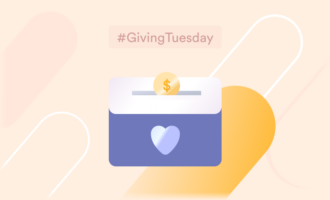
















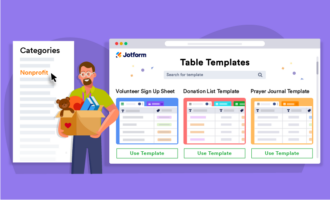




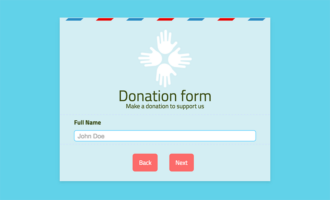


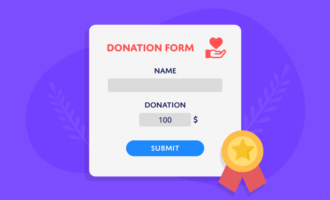


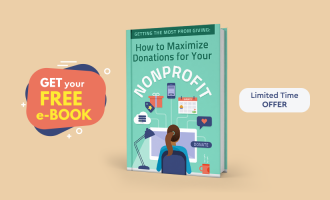
































Send Comment: